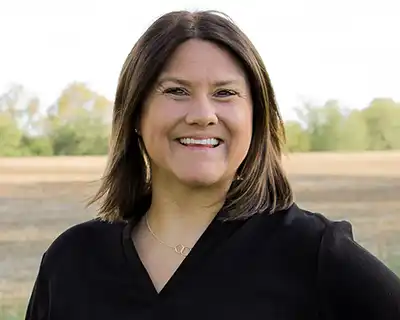U.S. Agriculture Secretary Tom Vilsack announced last week the USDA will earmark $1-billion for its Partnerships for Climate-Smart Commodities program, which will provide grants to coalitions that can prove it can implement climate-positive change in practices on farms and ranches, and then measure and validate those practices.
The effort is intended to develop climate-smart commodities, farm products that can be marketed as environmentally friendly to fill a demand from consumers and food companies for sustainable products. The USDA is currently accepting applications for pilot projects for farmers, ranchers and foresters:
- Implement climate-smart production practices, activities, and systems on working lands,
- Measure/quantify, monitor and verify the carbon and greenhouse gas (GHG) benefits associated with those practices, and
- Develop markets and promote the resulting climate-smart commodities.
The language from Secretary Vilsack and in the grant opportunity stresses that successful applications must have a plan for all three elements: implement new systems, measure/validate, and develop new markets, or at least have a plan to do so.
What It Means For Producers
Secretary Vilsack emphasized that this program is voluntary, intended to add revenue to producers, and open to any farmer operation regardless of size, geography, crop or type of operation. This prioritization of on-farm needs is encouraging and addresses the frustration many farmers have about programs that provide well-funded administrators or value-chain partners and neglect to appropriately compensate producers for their efforts.
Yes, but: Climate-smart commodity markets don’t quite exist yet, so the initial farm payments will revolve around funding to mitigate the cost of practice changes, such as funding the cost of soil sampling, cover crops, or grazing rotation.
What was said: “As groups of farmers and ranchers and producers and foresters voluntarily come together, we can provide the resources to support the investments and reduce the costs for those choosing to embrace these climate-smart practices. In other words, eliminate the financial risk or barriers that may exist today.”
The obvious caveat here is that it remains unclear how farmers will be aggregated and who will lead that effort, but farmer groups, commodity groups, and possibly extension services or retailers will likely play an important role.
Size doesn’t matter: There is also an emphasis on small farmers and ranchers and historically underserved operations, and while this will need to be evaluated in practice, there at least appears to be a genuine objective to include all types of farming operations that have the potential to produce climate-smart commodities regardless of size.
What was said: “I think we’ll find that the successful proposals will be those that aggregate farmers, come up with innovative, producer-friendly ways to do the measurement, monitoring and verification of greenhouse gas benefits … We are going to be looking for all these projects to meaningfully include small or historically underserved producers, and importantly, this effort is designed to compliment and not compete with private sector initiatives surrounding climate-smart agriculture.”
What It Means For Sustainability Professionals
This announcement instigated a flurry of activity among sustainability program administrators and value chain partners to solidify the three criteria – practice change, measurement, and the development of new commodity markets – into a single platform and strategy.
Who qualifies for the grants? Seemingly everyone, from local, state and tribal governments to private businesses, NGOs, farmer groups and academia.
What was said: “We’re hoping a wide range of public and private entities will come together to develop pilot projects that seek to deploy climate-smart practices across numerous farms, ranches, and forested lands, and we’re looking to cover an inclusive set of folks from across agriculture and forestry. Eligible entities looking for these grants can span anywhere from farmer groups to counties and towns, state governments and non-profit organizations, public and private institutions of higher education including minority serving institutions.”
Applications for grants between $5 million and $100 million are due April 8, and grant applications smaller than $5 million are due May 27. This condensed timeline won’t provide much time for the value chain to formulate programs, which means partnerships will be essential for winning bids.
In order to meet all the criteria for a winning bid, programs will need to include partners that are already strong in specific areas. For example, farmer organizations and retailers might be best positioned to aggregate farmers at scale, and commodity organizations focused on marketing and trade might be best suited to develop new markets. A mix of university extension, NGOs, and private industry will have an important role in creating crop plans, measuring, and validating results.
These requirements will force successful bidders to be creative in courting and solidifying partnerships in a longer value chain than they might be accustomed to working in and with partners in which they might be unfamiliar.
And while the USDA is stressing the importance of partnerships, grant agreements will be awarded to a single entity, which means either flagship companies and organizations will lead these pilots, or new entities will be formed by successful bidders, especially in the large-grant category.
What It means for American Agriculture
The overarching message here is that American agriculture is uniquely positioned to be a solution to climate change, an obvious global priority that requires a systems approach to global production and consumption across numerous industries. American agriculture could play a pivotal role, and climate-smart agriculture is a catalyst to fundamental change – with producers and their ability to monetize their efforts at the center of it.
What was said: “We can with this program position producers to be part of the solution to climate change, in fact I believe we can lead the nation in that solution while at the same time creating enormous economic opportunity in rural places.”
Additionally, this is about global competition and demand for sustainable products. American agriculture is reliant on export markets, and we can’t control how Europe, China, or other places will prioritize their purchasing decisions in the next 10 years as nations scramble to meet their 2030 climate goals.
What was said: “We’re trying to incentivize the creation of climate-smart commodities that hold higher value in the marketplace that farmers can generate additional profit from and capture that value for the farmer. This is about creating domestic markets that will provide American agriculture and forestry with the resources to do what they know to do best: to feed the world while being great stewards of our land and water.
“This is also about positioning American agriculture as a global leader, advancing competitiveness in our markets abroad … We need to get there first, and we need to be able to say to the world: We have led in this effort in order to maintain and expand those export markets. And I think that producers will also find as they embrace these practices that they’ll also benefit from improved soil health and the productivity that will come of that over time.”
This is an exiting time when federal funding is beginning to match the work that private industry, universities, NGOs and producers have been doing for decades, and the opportunities that empower producers are expanding so they can monetize the path that is right for their specific operations.



